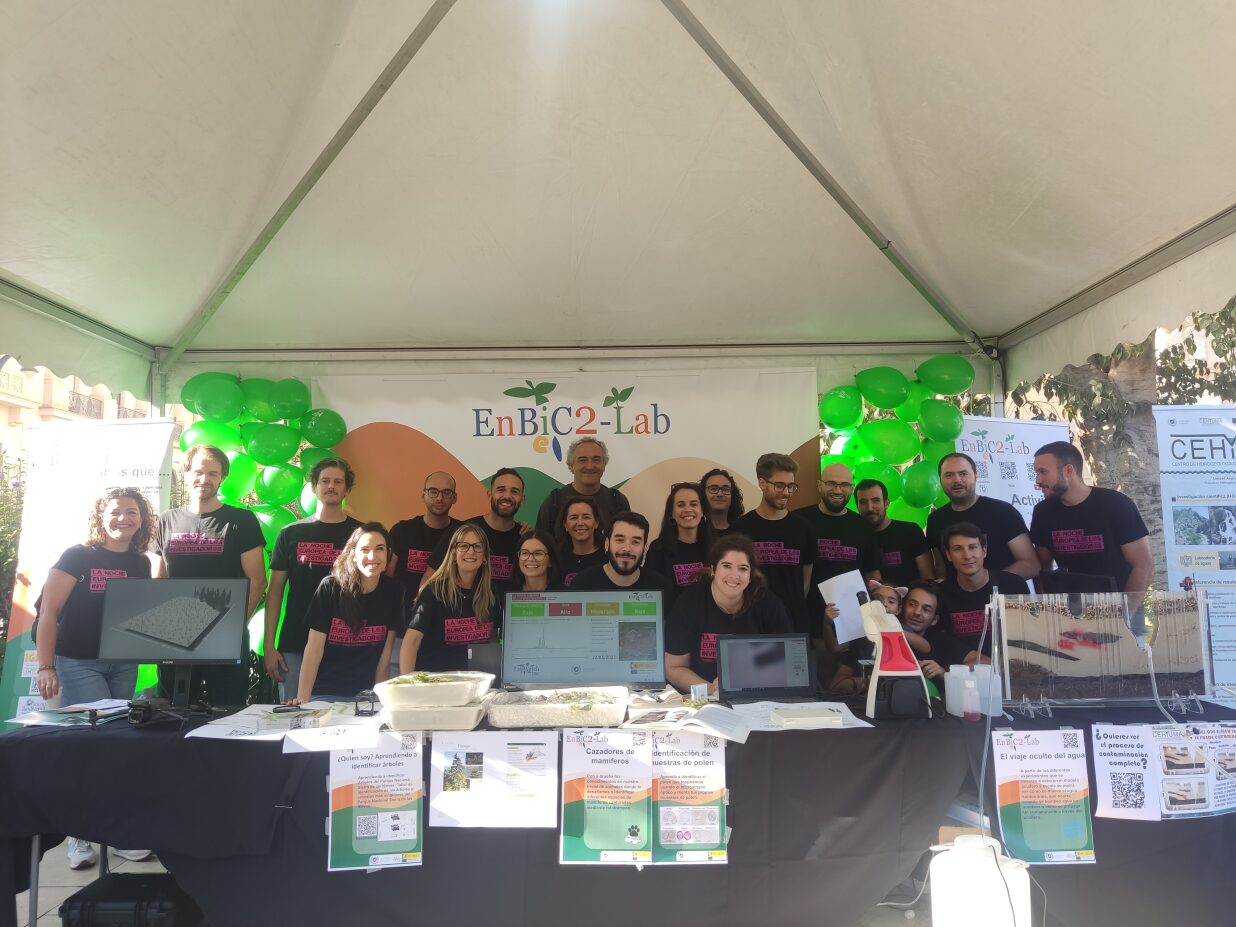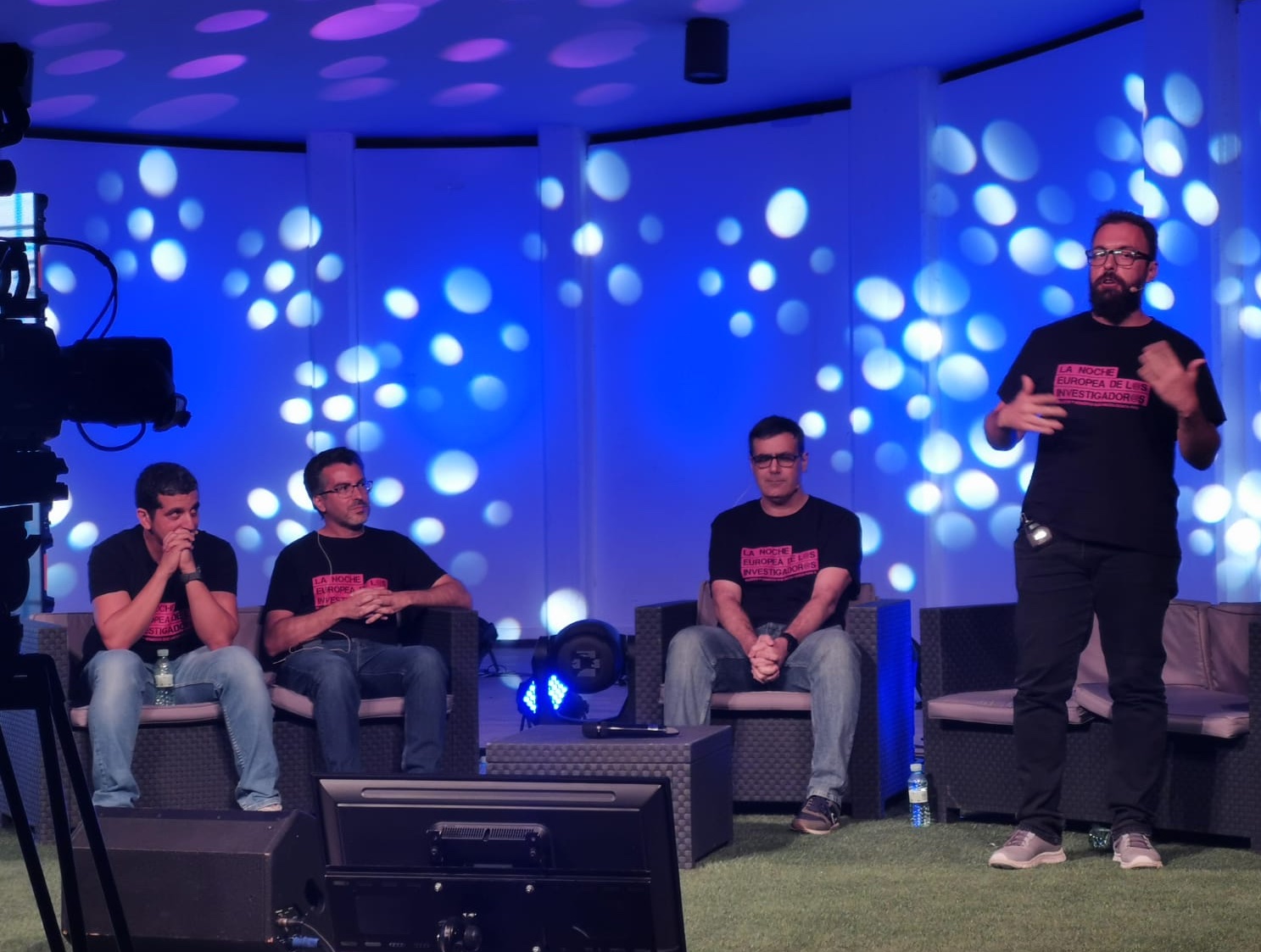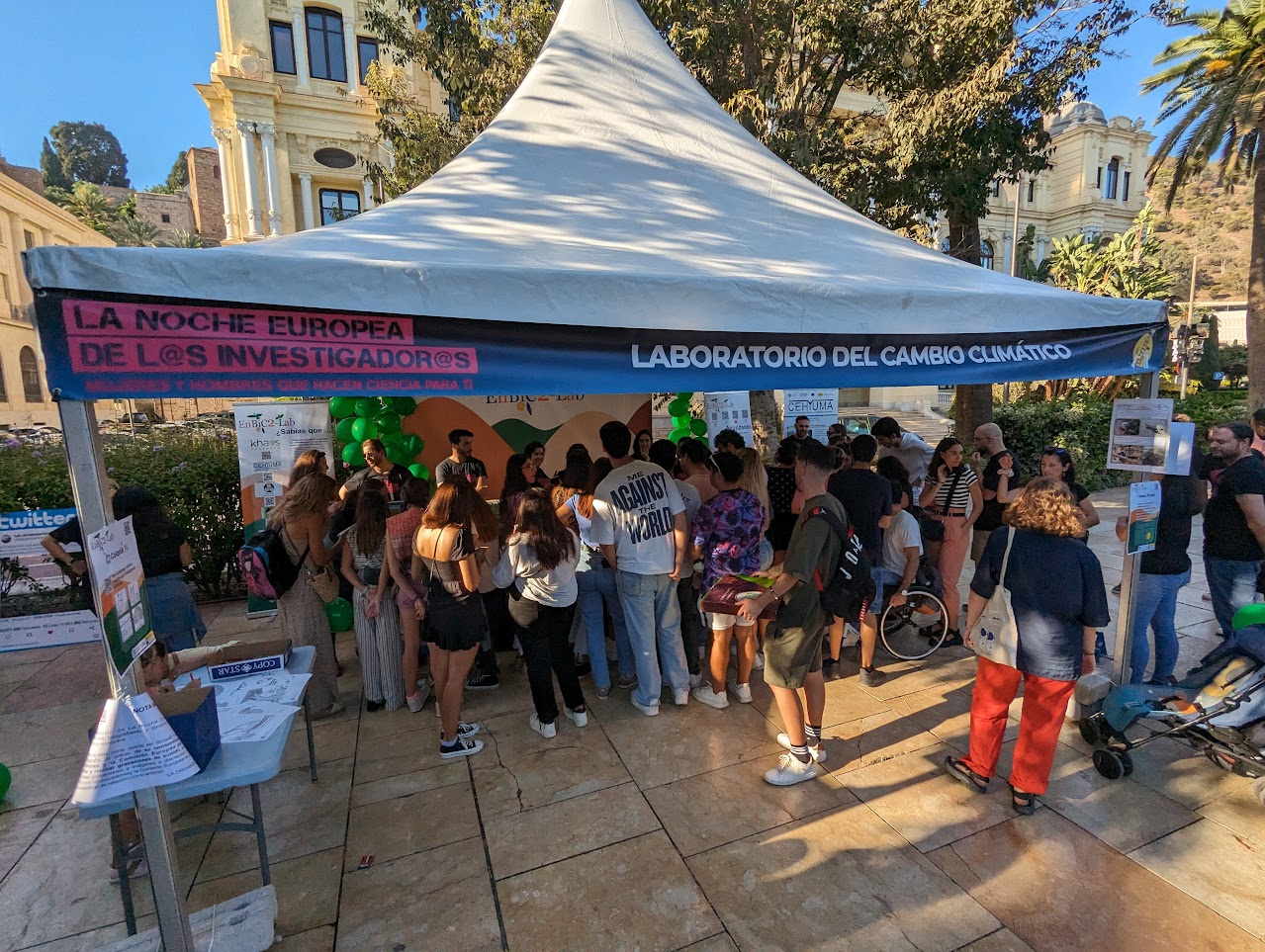The Institute participates in the 12th edition of the European Night of Researchers
On Friday, September 29, the streets of Malaga were filled with science for more than five hours of uninterrupted programming. This new edition of the European Night of Researchers has had fifty activities, distributed in six different venues and with the participation of more than 300 scientists. The event, which seeks to bring science closer to citizens, began at 17:30 hours with options for all audiences. ITIS researchers participated in different activities throughout the day. At the Paseo del Parque, families could enjoy activities related to environmental science at the Climate Change Laboratory. This space brought together not only scientists from fields such as the study of fauna and vegetation, but also members of the Institute of Technology and Software Engineering of the Malaga University. Our researchers organized this space in the context of the LifeWatch ERIC project “Environmental and Biodiversity Climate Change Lab” (EnBiC2-Lab), which aims to study biodiversity and sustainable ecosystem management.

In addition to organizing this space, ITIS members offered activities related to Artificial Intelligence through an activity for visitors to learn how the software can help identify existing fauna in a natural space. (You can learn more about this project on its https://enbic2lab.uma.es web portal).

In the middle of the afternoon, the Eduardo Ocón Auditorium was the setting for Hablando se entiende la Ciencia, which featured a round table on artificial intelligence. This panel (Artificial Intelligence: the end of the world as we know it) was organized by members of ITIS and their presentations focused on the chiaroscuros of Generative Artificial Intelligence, Nature-inspired methods and the application of Artificial Intelligence to address the challenge of providing more liveable, inclusive, efficient and sustainable cities. All this was intended to demystify this technology and mitigate the fears that AI is generating in the public. Finally, several AI applications were presented to address everyday problems of citizens, such as mobility or infrastructure design in cities.

Another of the activities in which our researchers have participated has been the exhibition From the abacus to the microprocessor, that rescues different tools that served for the mechanization of mathematical calculations in antiquity and that can be visited in the hall of the Rectorate of the UMA all the month of October.
The European Researchers’ Night has consolidated itself as a major scientific outreach event, promoted and funded since 2005 by the European Commission, within the Marie Skłodowska-Curie actions of the Horizon Europe programme, which has taken place simultaneously in almost 400 European cities since 2005. In Andalusia, the University Council, which finances the activity, expected a participation of about 80,000 people, a record number for a scientific event in the community. Researchers from the Institute of Technology and Software Engineering have once again demonstrated their commitment to translating scientific advances by bringing the University closer to the population.

